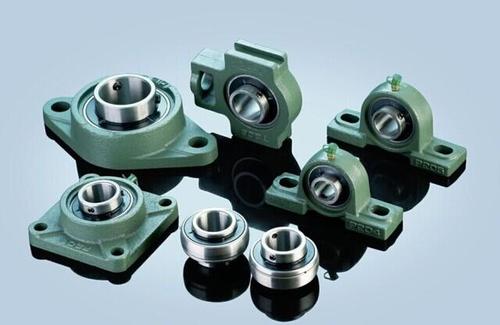CONTACT US
Zhejiang waxing electromechanical co.LTD.,Factory located in Shandong,Headquarters located in Zhejiang,China.
 1. Structure transformation in spheroidization annealing process
1. Structure transformation in spheroidization annealing process
The original structure before annealing is a hot rolled hot forging or normalizing structure, which is a pearlite interlaced with flake carbide and ferrite.When it is heated to Ac1~Ac3 and kept warm, the body centered cubic ferrite is transformed into the face centered cubic austenite, some flake carbide is dissolved into the austenite, and the remaining carbide is gradually transformed from flake to granular or spherical.The higher the heating temperature and the longer the holding time, the carbide will dissolve into austenite.In the subsequent cooling process, if the cooling rate is slow enough or isothermal enough to 790~810℃ (GCr15) (770~800 GCr15SiMn), the dissolved carbides will be precipitated in the form of grains at the undissolved carbides or new positions, and at the same time, the austenite will be transformed into ferrite matrix with granular carbides and granular pearlite distributed on it, which is the normal structure of spheroidization and annealing.The larger the cooling rate, the smaller the precipitated carbide, and the slower the cooling rate, the larger carbide.However, if the cooling speed is too fast, the heating temperature is too high, and the insulation time is not long, the dissolved carbide will be separated partly or completely in the form of flake, and become mixed pearlite with all or some flake carbide distributed in the ferrite matrix.
2. Grading principle of annealing tissue
The ideal annealing structure is a uniform distribution of fine spheroidized or granular carbide on the ferrite matrix.Therefore, the rating of such organizations is based on the following three criteria:
1) particle size of carbide;2) uniform distribution of carbide;3) spheroidization degree or morphology of carbide.
Description: 1) fine granular or spot-shaped pearlite is beneficial to obtain martensite with uniform content distribution after quenching.Superfine single carbide is often accompanied by high hardness, which is not conducive to subsequent machining, and the quenching and heating process is strict;Carbide particles are too thick, hard over low, is also not conducive to cutting, and due to the increase of carbide spacing, the subsequent quenching microstructure carbon concentration distribution is not uniform, affecting the performance.
2) the uniformity of carbide distribution directly affects whether uniform martensite can be obtained after quenching. The excessive unevenness of carbide distribution not only affects the cutting performance due to uneven annealing hardness, but also results in uneven content and size of martensite after quenching and even local overheating.
3. Organizational characteristics
Level 1: fine point + fine granular pearlite + local fine flake pearlite
Microstructure: the carbide particles are small, dotted and granular, dispersive, and partially flaky.The unqualified tissue was formed due to insufficient heating and part of the forged tissue was retained.
Level 2: point pearlite + fine granular pearlite
Microstructure characteristics: the carbide particles are fine and punctate with good roundness and uniform distribution.For a good qualified organization.
Level 3: ball pearlite
Structure characteristics: carbide particles greater than 2, complete spheroidization, uniform distribution, a good qualified organization
Level 4: ball pearlite
Structure features: coarse carbide particles, poor uniformity, uneven distribution of carbide, some areas are dense, some areas are rare, qualified tissue.
The hardness of GCr15, ZGCr15 steel shall be in the range of HB179~207, and the hardness of GCrSiMn, ZGCr15SiMn steel shall be in the range of HB179~217.
Level 5: heterogeneous spherical pearlite
Structure features: uneven size of carbide particles, poor roundness, angular and strip carbide, uneven distribution of carbide, some areas are dense, some areas are rare, as unqualified tissue.The formation of the tissue, in addition to the original tissue is large and uneven, but also with the heating temperature is too high, the cooling speed is too slow or repeated many returns.
Level 6: uneven coarse granular pearlite + flake pearlite
Structure features: the size of carbide particles is not uniform, and there are obvious patchy pearlite in some areas.The hardness is high, about HB217~229, but the turning performance is good.The modified structure is obtained by adopting special heat treatment process and special molding method.
Copyright © 2025 Zhejiang waxing electromechanical co.LTD. | All Rights Reserved Design
Hello, please leave your name email or WhatsApp here before chat online so that we won't miss your message and contact you smoothly.